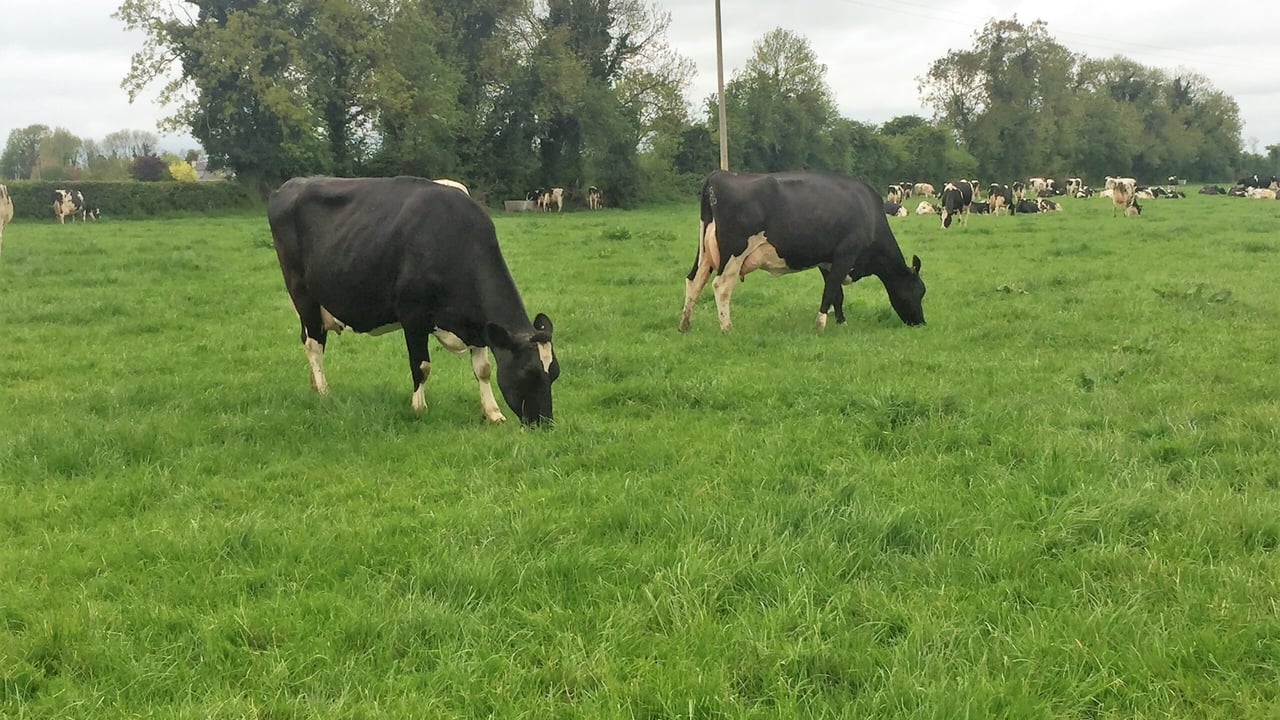National herd EBI has increased by €211 since introduction
The economic breeding index (EBI) has played a key role in breeding on Irish dairy farms for over 20 years now.
The EBI was launched in 2001, replacing the relative breeding index (RBI) that had been in place - its success on many farms is without question.
The index is comprised of seven sub-indexes. Of these, milk production and fertility are the two most valuable traits, contributing 33% each.
The sub-indexes are: (1) Milk production; (2) Fertility; (3) Calving performance; (4) Beef Carcass; (5) Cow Maintenance; (6) Cow Management; (7) Health.
The economic values in the index are based on data collected from Irish dairy farms and the dairy industry.
Based on the latest figures from the Irish Cattle Breeding Federation (ICBF), since its introduction, the average EBI of first calved heifers has increased by €211.
The current national average EBI is €190, in 2000 (the 1st year of recorded data) this figure was -€21.
One of the main aims of the EBI was to increase profitability on Irish dairy farms, with research findings showing that for every €1 increase in EBI, it will result in a €2 gain in net profit/cow.
This means that a cow with an EBI of €100 is leaving €200 more profit per lactation than cows with a value of €0.
| Year | Avg EBI | Avg Milk SI | Avg Fert SI | Avg Calv SI | Avg Beef SI | Avg Health SI | Avg Main SI | Avg Mgt SI |
|---|---|---|---|---|---|---|---|---|
| 2000 | -21 | -15 | 3 | -4 | -6 | -8 | 14 | -2 |
| 2001 | -20 | -11 | 0 | -5 | -6 | -7 | 14 | -2 |
| 2002 | -24 | -11 | -4 | -5 | -6 | -7 | 14 | -2 |
| 2003 | -20 | -11 | -1 | -5 | -6 | -6 | 14 | -2 |
| 2004 | -19 | -8 | -3 | -4 | -6 | -6 | 14 | -2 |
| 2005 | -8 | -4 | 0 | -2 | -7 | -4 | 14 | -2 |
| 2006 | 3 | -2 | 3 | 0 | -7 | -3 | 14 | -1 |
| 2007 | 11 | 2 | 5 | 2 | -7 | -3 | 14 | -1 |
| 2008 | 15 | 4 | 4 | 3 | -7 | -2 | 14 | -1 |
| 2009 | 29 | 8 | 12 | 5 | -9 | -1 | 15 | 0 |
| 2010 | 41 | 11 | 16 | 7 | -9 | 0 | 15 | 0 |
| 2011 | 56 | 17 | 21 | 10 | -10 | 1 | 15 | 1 |
| 2012 | 66 | 20 | 25 | 13 | -10 | 1 | 14 | 1 |
| 2013 | 84 | 25 | 34 | 15 | -11 | 2 | 15 | 1 |
| 2014 | 94 | 29 | 38 | 17 | -11 | 3 | 15 | 1 |
| 2015 | 103 | 34 | 40 | 18 | -11 | 3 | 15 | 1 |
| 2016 | 115 | 37 | 47 | 20 | -12 | 4 | 15 | 2 |
| 2017 | 129 | 42 | 52 | 23 | -12 | 4 | 15 | 1 |
| 2018 | 137 | 45 | 56 | 25 | -12 | 4 | 14 | 2 |
| 2019 | 146 | 51 | 59 | 26 | -12 | 4 | 14 | 2 |
| 2020 | 156 | 56 | 62 | 30 | -12 | 3 | 13 | 2 |
| 2021 | 173 | 63 | 70 | 32 | -13 | 4 | 13 | 2 |
| 2022 | 190 | 69 | 78 | 35 | -13 | 5 | 13 | 2 |
Source: ICBF
According to ICBF, this accelerated rate of genetic gain can be attributed to two initiatives - the Dairy Gene Ireland breeding programme launched in 2005 and the introduction of genomic selection in 2009.
This has resulted in first calving heifers in 2022 having an average EBI that is €214 greater than first calving heifers 20 years ago.
This results in an extra €428 in profit/lactation for a heifer calved this year compared to the heifers calved down in 2002.
Based on the current yearly increase of €12.2/year, the expected EBI of first parity females in 2030 is €288.

